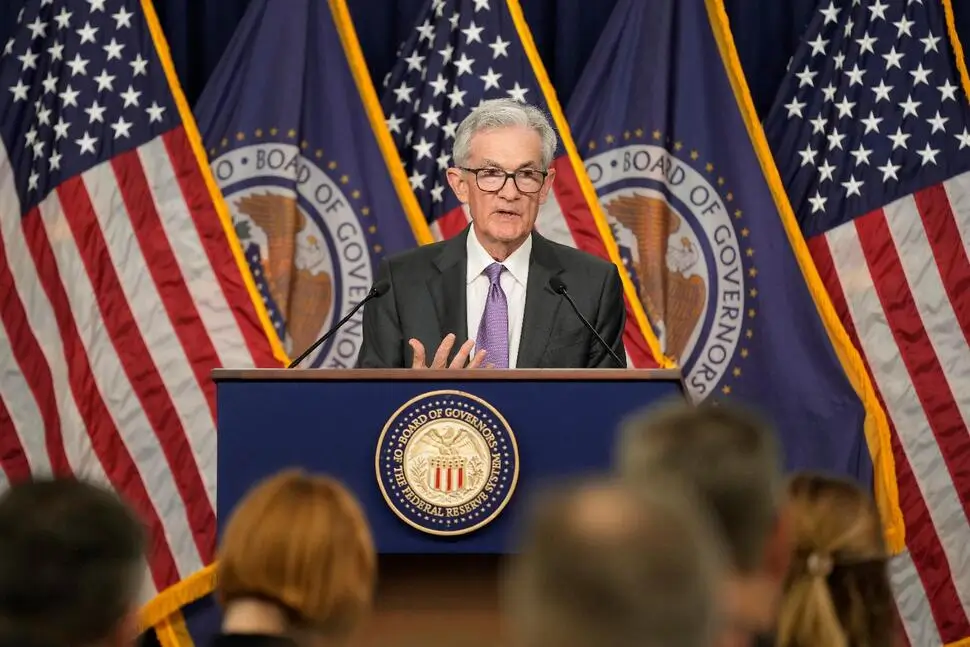US NEWS
5 Takeaways From the Federal Reserve Meeting


The Fed sent a message to consumers, businesses and investors. Here’s what it means.
The Federal Reserve concluded a “no news is good news” meeting on Wednesday.
But to suggest there is nothing to glean or profit from the announcement that interest rates will remain high for the next two months or that the economy is doing well would be mistaken.
Here are five things that are worth knowing about the Fed’s March meeting.
Interest Rates Are Headed Lower
It is true that rates were unchanged. But in the Fed’s projections, it pegs the year-end federal funds rate at 4.6%. That is more than three-quarters of a percentage point lower than where it is now. Given that the Fed meets six more times in 2024, it is a safe bet that there could be three quarter-point cuts between May and December.
The Economy Is Not Headed for a Recession Anytime Soon
Worrywarts who have predicted recessions for the past two years can take a breather. Not only did the Fed hold interest rates steady at the highest levels in two years, it said the labor market remained strong and it moved upward its forecast for economic growth this year from 1.4% to 2.1%.
“Today, instead of a recession, the economy has proved to be surprisingly resilient to the rate hikes,” said Brian Henderson, chief investment officer at BOK Financial. “The S&P 500 is up, the U.S. dollar has been depreciating against the yen and euro, and credit spreads are the lowest we’ve seen in 10 years. All these signs point to easing financial conditions.”
“Moreover, the current economic strength doesn’t seem to be a temporary blip, either: based on the Federal Reserve Bank of Chicago’s National Financial Conditions Index (NFCI), financial conditions have been improving since October 2023,” Henderson added.
Investors Can Have It Both Ways for Now
Typically, a strong economy is good for those who invest in stocks, as it allows companies to maintain or increase their profits, thereby boosting share prices.
“It’s highly encouraging for markets that the summary of economic projections reflected an increase in real GDP growth expectations across 2024 through 2026 relative to their December projections,” said Michelle Cluver, head of ETF model portfolios at Global X.
But a high interest rate climate is also good for fixed income investors who finally are seeing returns on their investments beat inflation. Traditionally a defensive investment to protect an investor from the volatility of stocks, “bonds are now in the portfolio for a good reason,” says Matt Eagan, portfolio manager at Loomis Sayles. “I do think yields are going to stay high.”
Inflation May Have Eased a Lot, But 2% Is Still a Ways Off
The Fed has an annual inflation target of 2%. But there is a lot of wiggle room around that number, and Chairman Jerome Powell took up most of it in his press conference following the central bank’s announcement.
While Powell issued his now obligatory comment, “We are strongly committed to returning inflation to our 2% objective,” the Fed’s own projections do not see that happening until 2026 following a path that takes its preferred inflation measure down to 2.4% this year, then 2.2% next before hitting the target.
Powell described recent hotter-than-expected inflation readings as making the path to 2% “bumpy,” a word that is now likely to feature prominently in descriptions of Fed behavior.
“The most recent inflation print was hawkish on the surface, but the details are slightly more reassuring,” said Todd Jablonski, chief investment officer and global head of multi-asset and quantitative investments at Principal Asset Management. “Core services inflation was again hot, yet the all-important core services ex housing weakened from
last month and shelter inflation also nudged lower.”
“The disinflationary trend is petering out, and inflation does not appear to be resurging,” he added. “With the broader set of labor data, market data, surveys data suggesting that the economy is cooling, albeit painfully slowly, price pressures should also subside very gradually.”
A Lot is Riding on the Labor Market
Traditional economic theory holds that restrictive monetary policy has a negative effect on workers, as activity shrinks and firms cut payrolls. That has not really happened this time around as monthly job numbers average 250,000 this year. The credit for that has been an expansion of the labor supply courtesy of increased immigration and the return to the labor force of workers sidelined during the pandemic. An increase in productivity has also occurred, holding wage growth from spiraling upward.
“The upgrade to growth expectations paired with an inflation forecast that ticked up only for 2024 suggests that the Fed sees what we see in regards to productivity and supply-side dynamics – particularly in the labor market – playing a key role in laying the path to a soft landing,” said Elyse Ausenbaugh, global investment strategist at J.P. Morgan Global Wealth Management.
Source: https://www.usnews.com/news/economy/articles/2024-03-21/5-takeaways-from-the-federal-reserve-meeting
